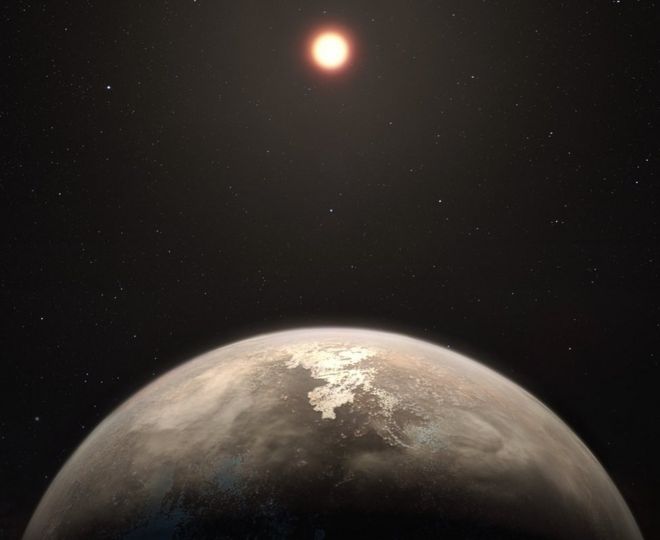
Ross 128 b might be a target in the search for extra-terrestrial life
Astronomers have found a cool, Earth-sized planet that's relatively close to our Solar System.
The properties of this newly discovered planet - called Ross 128 b - make it a prime target in the search for life elsewhere in the cosmos. The climate and atmosphere seem adequate to support life so it is very exciting. At just 11 light-years away, it's the second closest exoplanet of its kind to Earth. The closest one, known as Proxima b, looks to be less hospitable for life. Found in 2016, it orbits the star Proxima Centauri, which is known to be a rather active "red dwarf" star. This means that powerful eruptions periodically batter Proxima b with harmful radiation.
The new planet, Ross 128 b, orbits a star that's not dissimilar to Proxima Centauri (it's also a red dwarf), but is significantly less active.
Co-discoverer Nicola Astudillo-Defru from the Geneva Observatory in Switzerland told
journalists, "Because Proxima Centauri blasts its planet with strong flares and high energy radiation, I think Ross 128 is much more comfortable for the development of life. But we still need to know what the atmosphere of Ross 128 b is like. Depending on its composition and the reflectivity of its clouds, the exoplanet may be life friendly with liquid water as the Earth, or sterile like Venus.
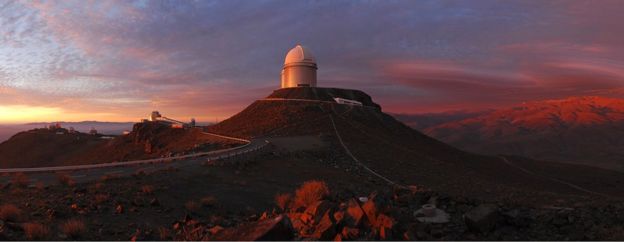
The discovery was made at the La Silla Observatory in Chile
The new world was discovered with the High Accuracy Radial velocity Planet Searcher (Harps) instrument at the La Silla Observatory in Chile. The work will be published in the journal Astronomy & Astrophysics.
Dr Astudillo-Defru said the find was the result of more than a decade of "intensive monitoring" using the Harps instrument. At 1.35 times the mass of our planet, Ross 128 b is a bit heftier than Earth and orbits 20 times closer to its star than we orbit the Sun. But because the new planet's parent star is much smaller and dimmer than our yellow sun, it receives only a little more solar radiation than Earth. Consequently, it is expected to have a surface temperature close to that on our own planet.
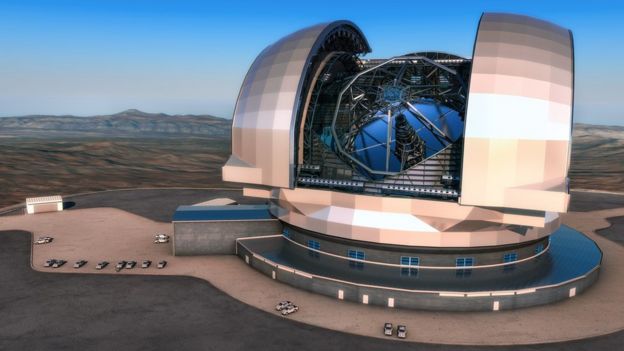
The Extremely Large Telescope should be able to probe the atmospheres of exoplanets like Ross 128b
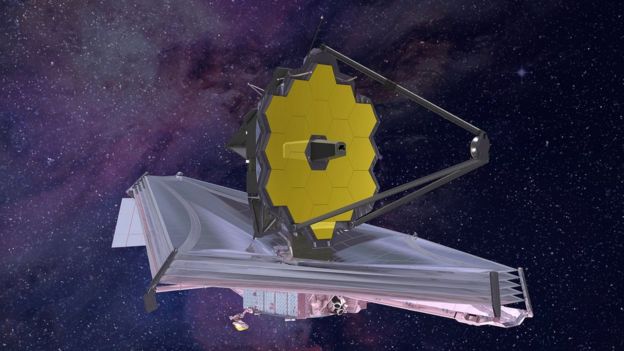
The James Webb Space Telescope should launch in 2019
Of the smaller contingent of Earth-sized planets, the vast majority orbit red dwarf stars - the most common type in the Milky Way. Because this category of star is dim, it's easier for astronomers to detect low-mass planets when they pass in front (as viewed from Earth), blocking out a portion of the light.
Red dwarfs are generally more active than G-type stars like the Sun, but there's underlying variation.
At "just" 4.2 light-years away, Proxima b may be the closest exoplanet with a mild temperature. But it receives about 30 times more extreme ultraviolet radiation than Earth. Ross 128 b, on the other hand, has the "quietest" nearby star to host a temperate exoplanet.
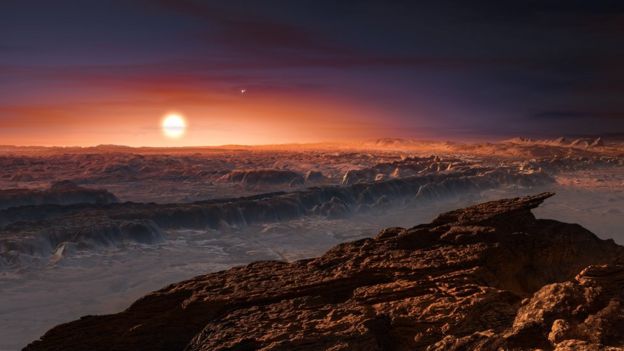
Proxima b is in the habitable zone, but could be exposed to harmful levels of radiation
There's still uncertainty about whether Ross 128 b is within its star's habitable zone, but scientists say that with temperatures of between -60 and +20°C, it can be considered temperate. But, as Dr Astudillo-Defru alluded , a lot depends on the presence of an atmosphere. An envelope of greenhouse gases can warm the surface and provide sufficient pressure to keep water in the liquid state.
Next, astronomers want to study the atmospheric composition and chemistry of suitable, nearby worlds like Ross 128 b. The detection of gases such as oxygen could potentially point to biological processes. When the ELT ( European Southern Observatory's Extremely Large Telescope) comes online (at the middle of the next decade) it will provide both the power and resolution to observe Ross 128 b directly. We will be able to see if it has an atmosphere and, eventually, to search for O2, water and CH4 (methane).
An atmosphere, O2 and water would be super exciting and an important step toward the evidence of life outside our Solar System.
Although currently 11 light-years from Earth, the new planet's parent star Ross 128 is moving towards us and is expected to overtake Proxima Centauri as our nearest stellar neighbour in just 79,000 years - a heartbeat on cosmic timescales.
The search for life continues and it is no longer a question of 'if' but 'when'.
No comments:
Post a Comment
Through this ever open gate
None come too early
None too late
Thanks for dropping in ... the PICs